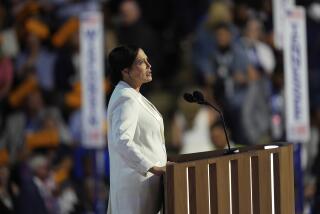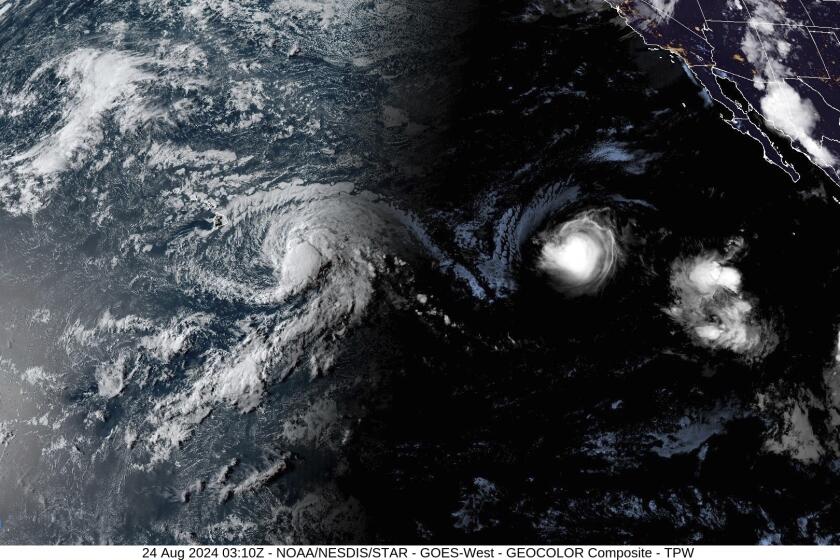Pacific Fleet Begins Safety Stand-Down
The carrier Kitty Hawk, ordered to end its training exercises prematurely after the fatal crash of one of its jets, returned to port Sunday as the Pacific Fleet began a safety stand-down to reassess safety procedures for its aircraft.
The carrier was ordered back to its berth at North Island Naval Air Station by Vice Adm. Brent M. Bennitt, who also ordered a two-day stand-down for all 1,600 aircraft stationed on the West Coast, Hawaii, Guam and Japan.
Each of the 79 squadrons will decide when to conduct its stand-down, but Bennitt asked that, among other things, they all review procedures for ejecting from aircraft that are out of control.
“Those are the kind of things that can save people’s lives,” said Navy spokesman Cmdr. Gregg Hartung. “That’s why we want a thorough discussion of ejection. We’ve lost too many lives recently.”
In probably the Navy’s best-known recent aircraft fatality, Lt. Kara Hultgreen would have survived the Oct. 25, 1994, crash of her F-14 if she had ejected a fraction of a second sooner, according to an exhaustive review of the case by Navy investigators.
Also Sunday, the Navy identified the crew of the EA-6B Prowler that crashed off the Southern California coast Saturday.
The body of Lt. Cmdr. James Dee, 35, of New York City, the electronic warfare officer, was recovered within minutes . But the pilot, Lt. Thomas Francis, 26, of Fountain Valley, Calif., remained missing and presumed lost.
Lt. Charles Luttrell, 35, of Oak Harbor, Wash. and Lt. Derrick Busse, 29, of Escondido, both electronic warfare officers, were in stable condition at Balboa Naval Hospital in San Diego.
Francis’ father, Bob, said Sunday, “I know [the Navy] has had some problems lately. Maybe if it’s a mechanical problem, this will help bring it to their attention so nobody else has to lose a son.”
The EA-6B Prowler, developed during the Vietnam War, is used to jam an enemy’s radar and communications. It was used extensively in Operation Desert Storm to support Navy and Air Force missions and is being used in the Bosnian peacekeeping operation.
The new stand-down order, which each squadron must accomplish by March 5, was issued on the same day that the Navy’s 330 F-14s were finishing a three-day stand-down prompted by three recent crashes of planes based at Miramar Naval Air Station in San Diego. Four fliers and three civilians were killed in those crashes.
The Navy has issued new guidelines for pilots of the F-14, a supersonic fighter. They include lower speed limits for lower altitudes and restrictions on the use of thrust-inducing afterburners. Under 10,000 feet, the planes are not to be flown faster than about half their maximum speed.
A congressional subcommittee hearing is set later this week on the safety record of the F-14, 32 of which have crashed in the past five years.
The Prowler was part of a squadron based at Whidbey Island, Wash., Naval Air Station. The last Prowler crash was in June 1994, according to Navy spokesmen.
More to Read
Sign up for Essential California
The most important California stories and recommendations in your inbox every morning.
You may occasionally receive promotional content from the Los Angeles Times.






